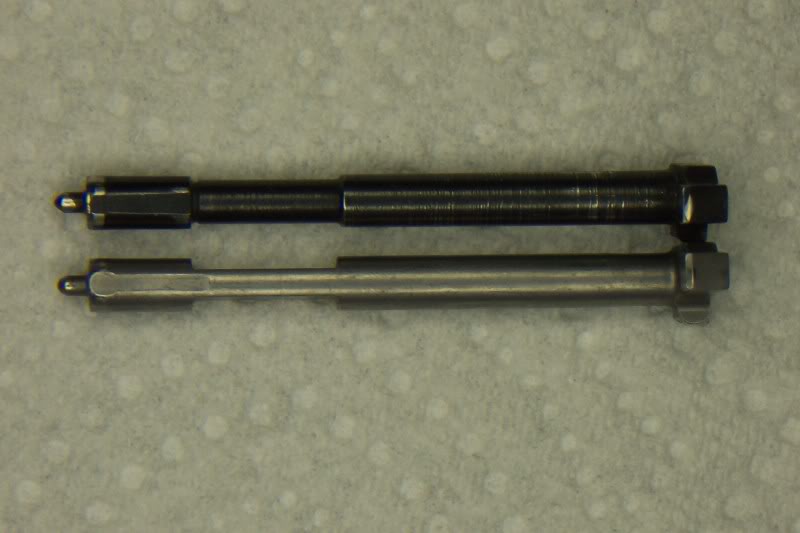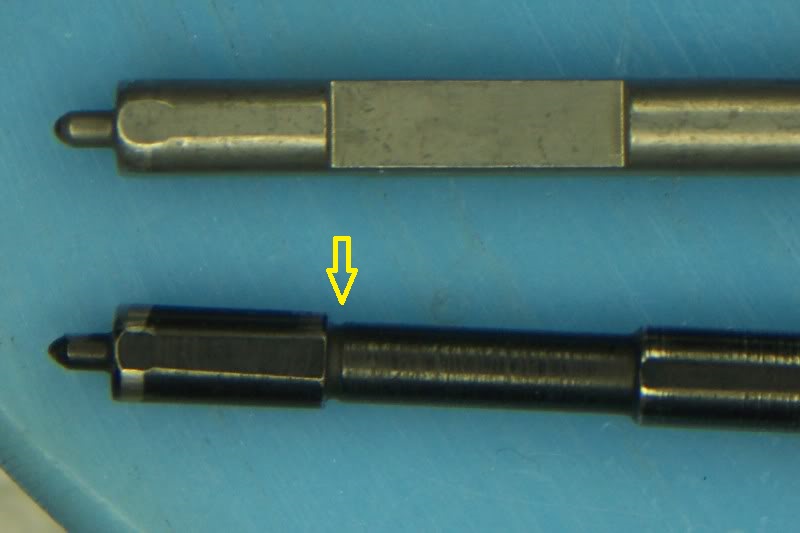As an aside, I remember that when the SD9 was introduced to replace the SIGMA, I was really, really, really praying that S&W would sell off their SIGMAs at fire sale prices. My hope was to purchase 3 or 4 SIGMAs.
The last revision of the Sigma benefited from some attention given it in-house. One of the guys at the factory who was on the team that did the revision told me about it. He said they'd lightened the trigger by close to a pound, and made the reliability as much as anyone could ask for in real world conditions. That was back when you could see a Sigma advertised on sale for $259-$279, which made it a real sleeper bargain for a tough and reliable self defense pistol (if you didn't mind a trigger about as stiff as the Glock "+" connector.

)
A bit of trivia I remember from my Sigma armorer class ....
For their first foray into a plastic pistol, S&W wanted to design a plastic grip frame around a steel magazine, but they wanted it to be slimmer and address some of the grip angle/girth complaints heard among some Glock customers. The story was they invested some significant money into gathering market study groups and listening to average folks from the commercial gun buying market, and that was how they came up with the Sigma (and later SD) grip angle and configuration. It was info from focus groups driven by potential customers, not by the people inside the company.
Yes, they had to change the gun enough not to infringe on the Glock patent, which basically meant they changed the trigger coil spring and moved it to the front of the trigger bar. That put it closer to the source of the recoil force, so they devised the dense fiber spring insert to dampen the shock and recoil force harmonics that might weaken a spring. We were told that if for some reason a Sigma might become submerged in water, and the fiber absorbed so much water that it shifted and slipped outside the trigger spring, we could tightly roll a cigarette filter and use it as a field expedient spring insert until the gun could get a new spring/insert.
When I asked how important the fiber insert was to mitigate accelerated wear to the spring, I was told that without the dense fiber insert a spring might suffer breakage when it reached about 3,000 rounds fired. Well, I'd think someone would have a gun back at the bench before that many rounds were able to be fired in any incident. (Unless the gun was being used overseas, etc.)
When I started attending the M&P pistols armorer classes, I noticed that the engineers had made a subtle revision to the end coils of the trigger spring to help prevent the fiber inserts from slipping out. The springs are sent to armorers with the fiber inserts already installed. The recommended replacement interval for the M&P trigger spring is every 5,000 rounds. FWIW, that's the same recommended replacement interval for the Glock trigger-coil spring when I was sent a
Wearable Parts Replacement Schedule for LE .40's several years ago (before the Gen5 revision).









